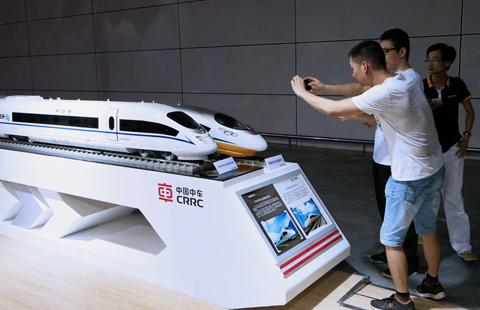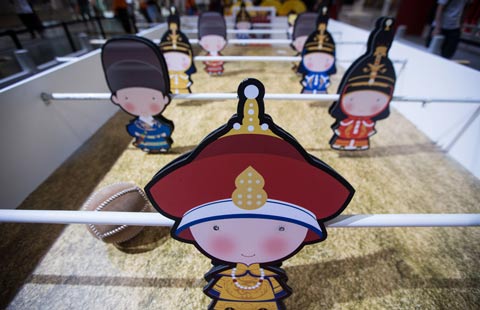Catching up fast in 3D printing
By Wang Ying (China Daily) Updated: 2016-07-25 07:25
 |
|
A man shows 3D printed copies of parts of human cervical spine and pelvis during a recent launch of an innovation center in Tianjin. [Photo/China Daily] |
Chuck Hull, an inventor from the United States, developed solid imaging back in 1980s. The process is different from traditional manufacturing. The latter is based on the removal of material by cutting and drilling. But 3D printing creates objects by consistently laying down materials, such as wax, metal and polyurethane, based on virtual blueprints from computer-aided designs.
"The main advantages of 3D printing over traditional manufacturing include reduced manufacturing cost, shorter production and delivery times, and the ability to produce complex shapes that are difficult to create using traditional methods," said Donald Godfrey, engineering fellow at Honeywell Aerospace.
According to Godfrey, in terms of shorter turnaround times, 3D printing technology can help shave months off delivery schedules. Some products can even be produced in less than a day, which will have a major, positive impact on customers.
"In the early stage of its development, 3D printing could only produce low-intensity goods, so it was called Rapid Prototyping Manufacturing. In 1991, Yan Yongnian, a professor at Tsinghua University, invited professor Jack Keverian from the US to introduce 3D printing technology to China. Since then, China embarked on the journey of researching and developing 3D printing," said Lin Feng, a professor at the university's mechanical and engineering department.
According to Lin, the Tsinghua University team designed a 3D printer in early 1990s and the first product of the printer was a car model made from paper.
"We did not start much later than our counterparts globally, and our researchers and experts are striving to catch up in the application of this technology in more areas with a broad selection of materials," said Zeng Xiaoyan, a professor from the Huazhong University of Science and Technology.
- NEV makers short of cash in tricky market
- Door opens for removal of stake caps for carmakers
- High recalls no cause for alarm
- Joint scientific research drives traditional Chinese medicine westward
- Warcraft wows Chinese, sows seeds of fan economy
- Rising bad loans shift banks' focus to risks and debt securitization
- A-shares shiver as yuan weakens
- Sonova hears China's message loud and clear


















